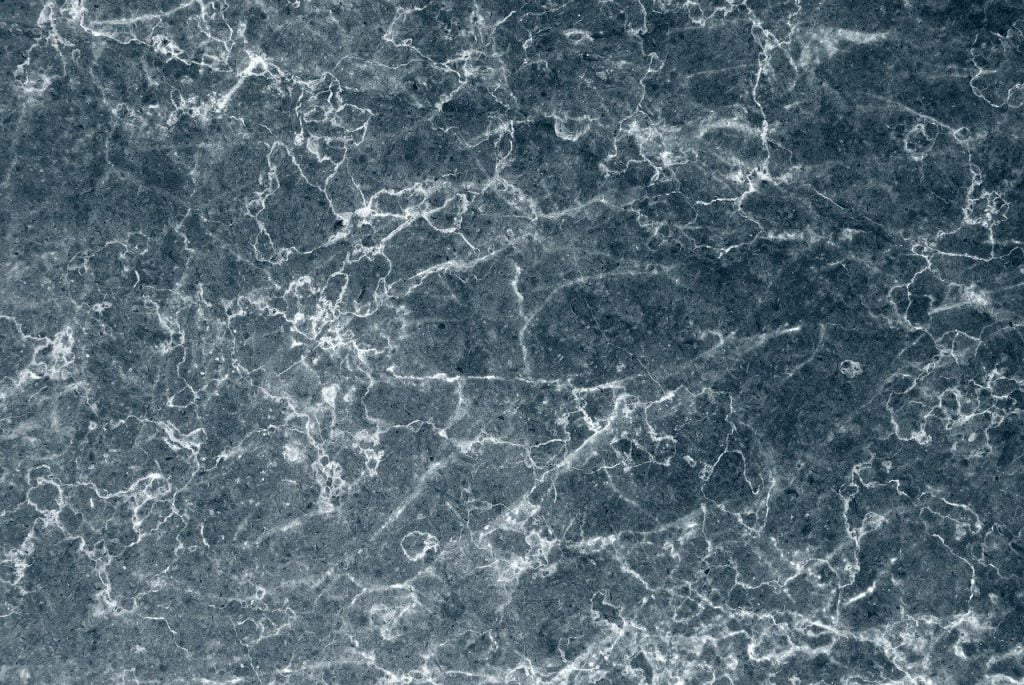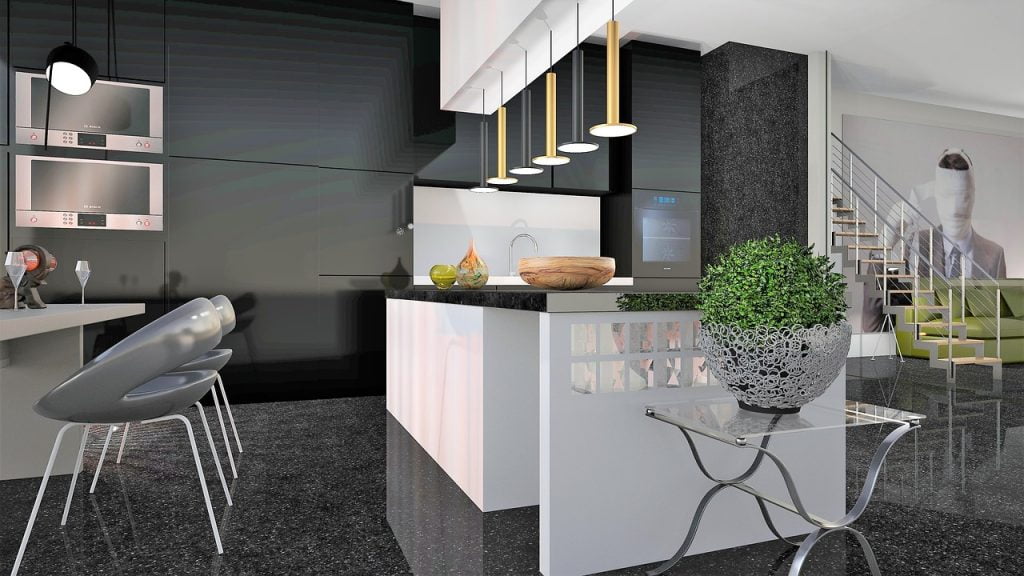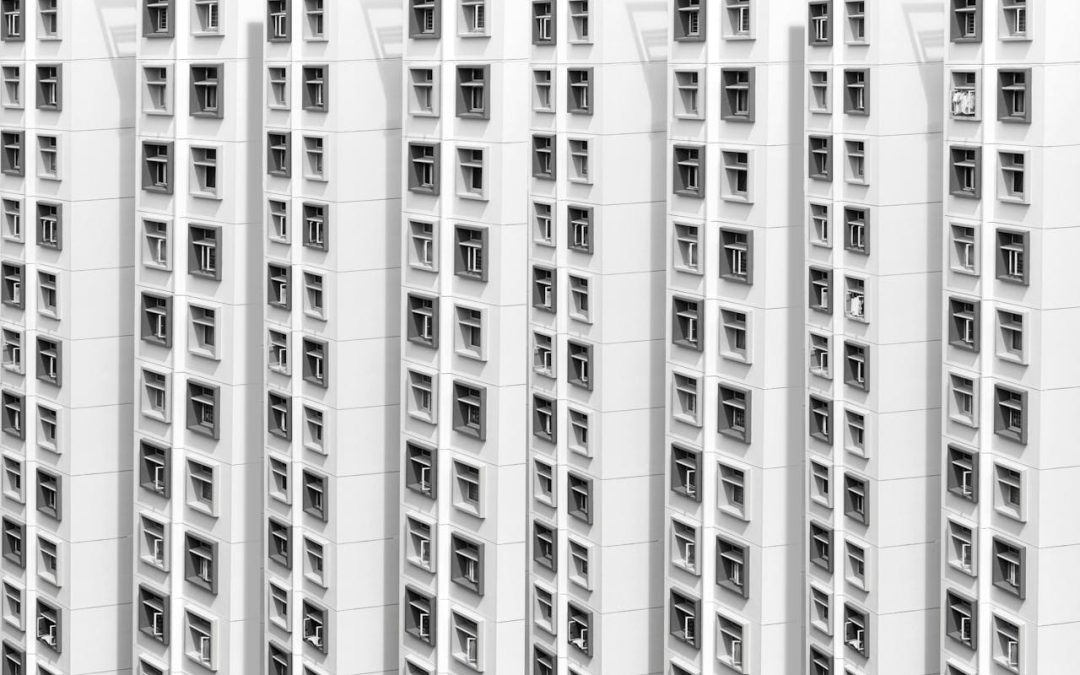How to clean a marble floor?
If you remember, cleaning your Vinyl floor is often sufficient with just plain water and without any special detergents. Similarly, cleaning your marble floor can be done perfectly with just plain water and a good mop too!
That said, I’m certain you are here to hear more than just that. Perhaps, you have already tried that, but still feel your marble tiles need deeper cleaning. Well, great! Then this guide will give you exactly what you need.

Vinyl V.S. Marble
Before we begin, it is good to know the basic differences between Vinyl and Marble material used for flooring:
| Property | Vinyl | Marble |
| Cost | Economical | Expensive |
| Versatility | Good (Many different forms, shapes and sizes) | Less so (requires much more effort to carve or cut) |
| Scratch-proof | Less easily scratched – more suitable if your house has elderly, kids and pets running around | Easily scratched and requires cautionary measures (see below) |
| Maintenance | Slightly easier to maintain and clean | Require gentler cleaning techniques and may require re-sealing or restoration after years |
| Temperature (pertinent in humid Singapore) | Neutral | Cool to touch (hence an advantage in temperate countries like Singapore) |
| Value Creation | Little (it might be a turn off for homeowners adverse to ‘low cost’ materials) | Good (it exudes a luxury feel and creates value and atmosphere when people visit your place) |
| Eco-friendly | No – it is purely synthetic and not environmentally friendly. | Yes – marble (if pure marble) is a natural rock from earth |
| Aesthetics | Good (as mentioned – many forms, shapes, patterns and colors to fit your style) | Good (more difficult to cut and style, but provides a “high class” feel) |
| Durability | Good | Good |
What Is A Marble Floor?
In case you require further introduction, marble is a type of stone flooring. Marble is a soft and porous stone material that is used often, at high prices, to make exquisite and praiseworthy floorings. Given that it belongs to the “stone family”, our tips for cleaning marble flooring here can be applied to many other types of stone flooring too, including slate, travertine and granite.
8 Common Mistakes When Maintaining A Marble Floor
Next, always take note of frequent pitfalls homeowners get into when cleaning their expensive and luxurious marble floor:
- Do not use any household detergent you find to clean the marble floor! A marble floor is more delicate than you think. Careless use of this may cause discoloration and etching of the marble (also known as a chemical burn). Instead, use specialized cleaning detergents, which are pH neutral, as elucidated in our cleaning guide below.
- We cannot emphasize this enough because many homeowners still end up using bleach, vinegar, scouring powders, tile cleaners, or other acidic cleansers. Do not use these!
- Do not use hard bristle brushes or scrubs (including metal scrubs). These will scratch your precious marble. Only use soft sponges and gentle cloths.
- Avoid using vacuum – this strong cleaning equipment usually comprise of rough/hard bristles and surfaces which might scratch the marble.
- Not cleaning a marble floor regularly predisposes it to set stains and more scuffs and marks that are hard to clean. Aim to clean your marble floor at least once a week for every one person or one pet in the house. For example, if a family of 3 plus a dog lives in the house, clean it 4x a week!
- This is important – cleaning it 4x a week does not mean mopping it 4x a week! Too much wet cleaning exposes marble to moisture damage. Limit any wet cleaning activity to 25% of the regular dry cleaning. Thus, if you sweep your marble floor 4x a week, mop it only once a week.
- Not protecting the marble floor with floor mats and furniture leg covers. Therefore, as often as possible, cover your table and chair legs with rubber or fabric covers. Use absorbent rugs at entrances and exits to reduce dirt transferred to your marble floor.
- Leaving spills or stains to sit for too long. Certainly, being lazy is not an excuse! Leaving your spilt juice, milk or bloodstain on the marble floor over time makes it harder to remove. You should wipe it up with plain water and microfiber cloth as soon as it happens!
Cleaning Tools
Here are the cleaning equipment and supplies you require to start cleaning a marble floor comprehensively:
Cleaning Equipment to Clean Marble Floor
- Broom and Dustpan
- Mop
- Bucket and Wringer
- Squeegee
- Microfiber cloth
- Soft sponges and SOFT bristle scrubs
- Used Tennis Ball / Felt Pad
- Plastic Cling Wrap
- Masking Tape
Cleaning Supplies to Clean Marble Floor
- Distilled Hot Water
- Suitable Cleaning Detergents
- Window or Glass Cleaning Solution
- Stone/Marble Commercial Cleaning Solution
- Baking Soda Powder
- Alcohol Wipes / Spray
- White Chalk / Talc Powder / Marble Polishing Powder
- Etch Remover
- Marble Sealant
Having trouble with your marble flooring at home? Get professional marble cleaning, polishing and restoration services with MEIDE.SG today!
meide.sg is here for you, always.
Step-by-Step Guide To Clean A Marble Floor
1. STEP ONE: Sweep the floor
This is a basic but important step! Always sweep the floor and remove dry debris, dust and dirt before doing any wet cleaning. Use a flared broom – which has “split ends” and are soft and gentle to your marble surface to sweep up as much dirt as you can.
2. STEP TWO: Mop the marble floor with clean water
Use hot distilled water in a pail for basic plain water mopping. Compared to “hard water” or “tap water”, distilled water has less calcium and mineral deposits. This reduces risk of your floor being finely grazed or leaving a “stick feel” after the mopping. Additionally, water with higher temperatures can remove impurities and kill germs more effectively than cool water.
Read here for basic mopping technique tips, if this is your first few times doing mopping.
3. STEP THREE: Re-mop the floor with cleaning solution
When you are done mopping, dry your marble floor and check if it is clean enough to your liking. If not, repeat step two. A second round of hot water mopping may just do the trick to remove residual dirt and stains.
Remember not to resort to non-marble friendly solutions like bleach, vinegar, or any other commercial cleaners. These may cause rings, spots and etching (chemical burns), destroying your precious marble surface.
4. STEP FOUR: Remove stubborn stains, marks and etches in 9 different ways
Check it again. Is it still dirty? Still stuck with some stubborn marks and stains?
Now, you may consider using soapless or pH-neutral cleaning solutions, in addition to your hot distilled plain water. These will enhance the cleaning whilst still protecting your precious marble. There are many ways to clean and remove stains from your marble floor. We summarize all 9 of them here for you.
Note: you should always use 1 option at a time, over a small area first to test for potential damage to your material, if unsure.
4.1. Dishwashing Liquid
Put a few drops of dishwashing liquid into your pail of water and mop away. The hydrophobic property of this soap will dissolve organic dirt on your floor without harming it.
4.2. Glass Cleaning Liquid
Spray your marble tiles with window or glass cleaning liquid before mopping. Or, you can even use a squeegee to wipe down the surface just like how you clean your windows! This will get rid of smudges, footprints and stubborn water spots.
4.3. Stone Cleaning Detergent
Use a special stone cleaning detergent – these are uniquely formulated to clean and protect your stone surface. These may be expensive, but they are worth every penny! MEIDE recommends that you dab this solution with a microfiber towel over dedicated areas of your marble floor to be cleaned, and rubbing it in circular motions to focus on 1 small area at a time. Also, remember to follow the detailed instructions for the specific brand and type of marble cleaning detergent!
4.4 Alcohol
Spray alcohol over juice or milk stains on the marble floor. This can help dissolve the set stains, making them easier to soak up with plain water and clean rags thereafter.
4.5 Poultice Method
Use a poultice. Dab a thick layer of paste (comprising half water and half talc/white chalk powder) over the stained area. Cover it with a plastic cling sheet and tape down the edges to seal it. Leave it from a few hours to a few days. Then, use a wet soft sponge to mop up the poultice, which would likely have soaked up all the stains!
4.6 Baking Soda Powder Method
Alternatively, mix up 2-3 teaspoons of baking soda powder in a small cup of water. Use this paste as the “poultice”. However, MEIDE advises against leaving baking soda powder for more than 30 minutes. Baking soda is alkaline (NOT pH neutral), and has mild abrasive properties. Hence, too forceful wiping or prolonged usage may cause scratches, dull discoloration and damage to your marble floor.
4.7 Marble Polishing Powder
Instead of your D.I.Y poultice, you can purchase and use marble polishing powder too. Although more costly, it would likely be more effective and safer for inexperienced homeowners.
4.8 Felt pad or Used Tennis Ball
Use a felt pad or used tennis ball to rub away at scuff marks left by furniture dragging. However, note that in the first place, you should avoid dragging your furniture on marble! Also, always use furniture leg covers.
4.9 Commercial Etch Removal Pastes
Commercial Etch Removal Pastes – these can be purchased online or in hardware stores. This works for etching on marble flooring that are not too deep and not too extensive. Simply rub on to areas with etching, let it sit for a while (follow the product detailed description) and clean off with microfiber cloth. If your marble is too damaged or has too many discoloration spots, consider professional help instead.
Having trouble with your marble flooring at home? Get professional marble cleaning, polishing and restoration services with MEIDE.SG today!
meide.sg is here for you, always.
5. STEP FIVE: Rinse and dry
Finally, if you have used any soaps, other than good old water, make sure you rinse off the cleaning solution from your marble to avoid damage and etching. Then, wipe it dry with a clean cloth or mop. Do not let it air dry. Do not leave moisture sitting on marble because it is porous and may be damaged over time, especially if not sealed properly.
6. STEP SIX: Marble sealing
Right, now that you have heard the term “sealing”, remember to buy some good marble sealing compound from the hardware store or online. Use it periodically to ensure your marble is well protected. Generally, marble floors should be re-sealed every 3 to 5 years.
In fact, you can check if your floor requires re-sealing by pouring some water onto the surface. If the water forms good beads and does not spread out or get absorbed, your marble is still well sealed and protected.
Bonus Step: Marble Restoration
This is not cleaning per se. However, in the unfortunate event whereby your marble has sustained deep etching or damage, marble restoration may be required. This is a more tedious, long and expensive process of cleaning, grinding, smoothening and repeating it multiple times to ensure a homogenous, smooth and shiny marble surface is reconstituted. Look up professional cleaning companies such as MEIDE.SG to help you with this.

Recap of The 6 Steps To Clean Marble Floor
Time needed: 59 minutes
How To Clean A Marble Floor in 6 Steps
- Sweep The Floor First
Always sweep the floor and remove dry debris, dust and dirt before doing any wet cleaning. Use a flared broom – which has “split ends” and are soft and gentle to your marble surface to sweep up as much dirt as you can.
- Mop The Marble Floor With Clean Water
Use hot distilled water in a pail for basic plain water mopping. Compared to “hard water” or “tap water”, distilled water has less calcium and mineral deposits. This reduces risk of your floor being finely grazed or leaving a “stick feel” after the mopping. Additionally, water with higher temperatures can remove impurities and kill germs more effectively than cool water.
- Re-mop with clean water again
Dry your marble floor and check if it is clean enough to your liking. If not, repeat step two. A second round of hot water mopping may just do the trick to remove residual dirt and stains.
- Use any of these 9 methods to remove stains from marble floor
Remove stubborn stains, marks and etches with 9 different ways: dish soap, glass cleaning liquid, stone cleaning solution, alcohol, poultices, baking soda powder, marble polishing powder, felt pads/used tennis balls, or etch removal compound. Click here for the full details!
- Rinse and dry
Finally, if you have used any soaps, other than good old water, make sure you rinse off the cleaning solution from your marble to avoid damage and etching. Then, wipe it dry with a clean cloth or mop. Do not let it air dry.
- Marble Re-sealing
Buy some good marble sealing compound from the hardware store or online. Use it periodically to ensure your marble is well protected. Generally, marble floors should be re-sealed every 3 to 5 years.
Having trouble with your marble flooring at home? Get professional marble cleaning, polishing and restoration services with MEIDE.SG today!
meide.sg is here for you, always.




